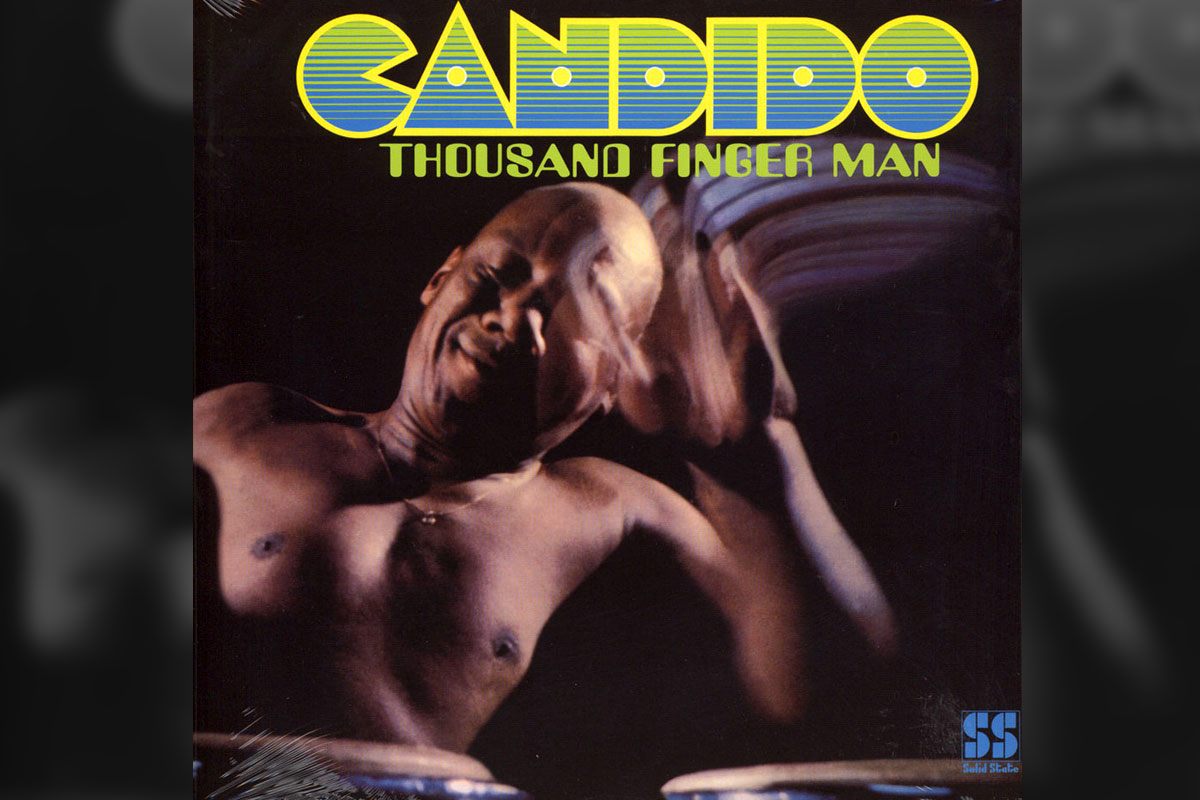Cándido Camero, like all Olympian figures, gods and heroes, was best known by his first name — just Cándido. When he celebrated his 99th birthday on April 22, 2020 (notice the rhythm), we have wondered if he really was immortal. But alas, Cándido was merely a channel — he died in his sleep on November 7, 2020 in New York City.
Cándido was born in 1921 in Havana, Cuba, making him 99 and a half years old.
Cándido was among the first Cuban percussionists to make a significant and definitive shift in the course of music. Cándido’s first (but by no means only) innovation was the fusing of the conga beats born in the rougher streets of Havana to the jazz of gleaming nightclubs in the capital and later New York City. Cándido reputedly learned to drum beating on empty condensed milk cans in El Cerro, one of the barrios of Havana. By the 1950s he was touring the United States as a featured soloist. He recorded with jazz musicians ranging from Miles Davis to Dizzy Gillespie, Sonny Rollins and Clark Terry.
If by chance Cándido had never come to New York, it’s not certain that popular music today would be the same or even recognizable. Aside from bringing the congas to jazz, he was responsible for a million things taken for granted today. Previously congueros had played a single conga; Cándido played three, tuned to specific pitches so he could play melodies like a pianist.
Strangely, little notice was given to Cándido’s passing in the electronic music press, despite his name being on the label of three of the most influential, bootlegged and sampled records in disco history. One of those three tracks even came uncannily close to creating the sound of house music years before the first house record was even made or anyone had heard of what was happening at a place called The Warehouse in Chicago.
In 1979, Salsoul released Cándido’s Dancin’ & Prancin’, four tracks that came out to an astonishing 36 minutes. It featured this cheeky cover:

There were many “celebrity” crossovers into disco at this time (some including Nicky Siano have even claimed that the copious “disco mixes” of artists like Dolly Parton was what killed it). This was not one of those. Every DJ ranks them in different order, but each of those tracks — the title track, a cover of Babatunde Olatunji’s “Jingo” (originally “Jin-go-lo-ba“) “Thousand Finger Man” and “Rock & Shuffle (Ah-ha)” — have been straight fire for dancefloors for 41 years. All but the last were staples at the Paradise Garage.
7 inches and 12 inches were released, reissued and remixed repeatedly over the years. Luminaries including Shep Pettibone, David Rodriguez, Jr., Todd Terry, Dimitri From Paris and more recently Dave Lee, Dr. Packer, The Reflex and others would remix one of the tracks from Dancin’ & Prancin’. Tracing back the DNA of modern electronic music from the leaves to their branches will find thousands of tracks that have a hook, a beat, a diamond-cut guitar strum or a conga originating from these tracks. If the world were fair, Cándido, his band for the Salsoul sessions and his heirs could live off residuals from just the unlicensed versions and songs that swiped whole hooks from these tracks alone.
“Thousand Finger Man” is quite simply house music. It’s house music long before such a thing existed:
It’s not unfair to say that producers still chase after that dense percussive sound Cándido’s band put together back in 1979. Many “proto-house” tracks were never appreciated as such, but “Thousand Finger Man” like “Jingo” has never been unappreciated. It has been in constant rotation, played by a 4/4 DJ in some place, at some time, on a regular basis for more than 40 years.
It’s an amazing life when you “accidentally” forecast the sound of a genre that doesn’t yet exist and which you have no connection to — and that’s just a footnote in all that you’ve done.
Rest easy, maestro.























